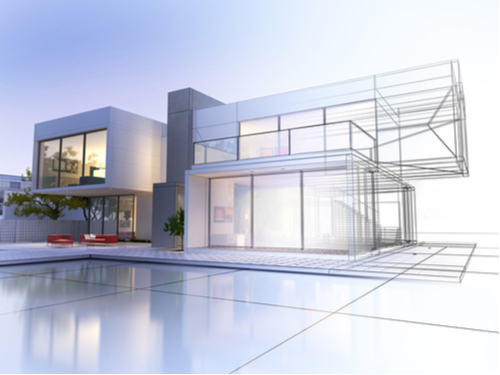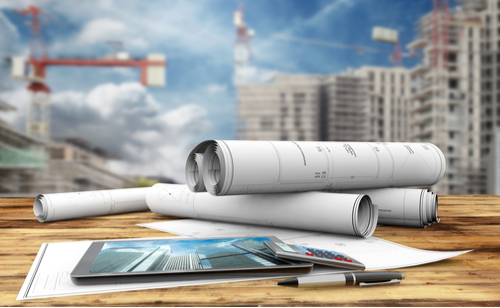National Fire Protection Association (NFPA) Compliant Design Service
Our designers create the most accurate, code-compliant designs with full knowledge of NFPA nuances.
We deliver in a short turnaround time so that you can begin constructing right away!
Our designs are meant to promote safety and incorporate the best practices from the industry.

The threat of fire constantly looms over crowded urban cities like New York and claims hundreds of lives each year. According to the data from the National Fire Protection Association (NFPA), 1,389,500 fires were reported in 2011 in USA. The fires resulted in the death of 3,005 civilians and injured another 17,500 people. The fires also caused $11.7 billion worth of property damages.
Various agencies in USA have dedicated themselves to developing standards and codes to prevent loss of lives and safeguard properties. Many states have their own versions of codes which must be followed while constructing a new building. Some codes are voluntary and promoted as best practices to reduce damages resulting from fires.
The NFPA is a trade association which develops and maintains a range of standards and codes for adoption by local governments. The organization has published more than 300 consensus codes to reduce the risks of fire and related impacts. 205 Technical Committees and 8,000 volunteers administer the standards and many governments around the world have adopted them.
For instance, the Life Safety Code (NFPA 101) is used in the majority of the US states that follow the guidelines for new buildings. The code outlines the minimum design elements, construction and operation to reduce the threats arising from fire, heat, smoke or toxic fumes. The standards are adopted by 43 states in USA and every builder must follow them. Based on your location, several other codes may also apply for both residential and commercial buildings.
It's imperative that you follow the codes in order to prevent loss of lives and damage in your property. That means your designs should be compliant to the standards outlined by NFPA and incorporate all measures described in the codes. If you don't comply with the mandated standards, you can land up in trouble and get your work suspended by the authorities.
New York Engineers can help you achieve full compliance with NFPA standards and codes. Our designing service incorporates all the applicable NFPA codes and best practices required to create a fire-resilient structure. We have the most adept engineers and architects with complete knowledge of NFPA standards. Our team can assist you in meeting NFPA guidelines no matter the state you are located in.

The standards developed by the NFPA is an effort to establish the minimum criteria for performance, operation and safety of fire-related systems and services. The standards are created by consensus committees represented by stakeholders and representatives of the industry. As such, the NFPA codes are not laws and complying with them is voluntary.
The NFPA can't make rules and doesn't enforce compliance with the codes themselves. The organization also doesn't inspect or certify designs, products or installations for compliance. But there are few exceptions.
Many NFPA codes have been adopted by the federal, state and local governments. The codes have been integrated into building and fire codes and any construction in the respective jurisdiction has to follow them. That means some standards are mandatory and designers must implement them in their construction drawings to be followed by contractors.
Implementing NFPA standards help you create a safe structure designed to reduce risks of fire and its consequences. Following the codes can help mitigate emergencies with minimum injuries, loss of lives or damage to property.
Nobody wants their home or property to be burnt down by fire- and NFPA standards ensure they don't!
NFPA has more than 300 codes that deal with the design, construction and operation of building elements and fire safety installations. You have to be aware of your local codes in order to determine the standards to include in your design. That being said, some NFPA codes have been adopted as common standards by many states. Some codes like the NFPA 101, NFPA 54, NFPA 58 and NFPA 30 has also been adopted as industry benchmarks.
Here's a look at a few important NFPA standards that may be applicable to you :
NFPA 1: Fire Code
NFPA Fire Code has been adopted by 19 states and outlines the minimum requirements for building constructions. NFPA 1 incorporates standards from 57 other NFPA codes and deals mainly with fire department access and fire protection systems. The codes apply to new and existing constructions, both for residential and commercial properties.
Our designs use NFPA 1 standards in combination with Building Construction and Safety Code and other best practices.
NFPA 10: Standard for Portable Fire Extinguishers
Fire extinguishers prevent the spread of fires by eliminating them at their source. It's crucial that your building has the right type of fire extinguishers to do the job. The NFPA 10 standard deals with the availability, placement, selection and installation of portable fire extinguishers. The provisions of NFPA 10 are vast and each provision describes different approaches for fire safety and prevention.
For example, it is necessary to install class K extinguishers for commercial fryers that use combustible cooking medium. Another provision states that fire extinguishers should be conveniently located so that they are readily available in case of a fire. Provision 6.1.3.3.1 states that all fire extinguishers must be visible without any obstructions.
We have to keep all the considerations in mind when we design your building. Our designs also adhere to the clauses of NFPA 11 and 12 that deal with different types of fire extinguishers.
NFPA 13: Standard for the Installation of Sprinkler Systems
Fire sprinklers can reduce the risk of death by 85% in the case of home fires. Various high-rise buildings now have to install an approved and supervised automatic sprinkler system. The NFPA 13 provides the industry benchmarks for the design and installation of automatic fire sprinklers. NFPA 13D and 13E outlines the standards for fire sprinklers for residential properties including manufactured homes, one or two unit family dwellings and low-rise residential occupancies, respectively.
All buildings we design integrate fully automatic fire sprinkler systems to prevent property damage and loss of lives.
NFPA 20: Standard for the Installation of Stationary Pumps for Fire Protection
Fire pumps are an integral part of fire protection systems. The NFPA 20 presents the requirements for stationary fire pumps which must be followed to avoid time consuming and costly mistakes. We design efficient fire pump systems that function without issues and helps to protect yourself from fire threats.
NFPA 22: Standard for Water Tanks for Private Fire Protection
The NFPA 22 outlines the minimum requirements for design, construction and installation of water tanks and related accessories for private fire protection. The standards encompass various components such as gravity tanks, foundations, towers, pipes and fittings, valve enclosures and more.
We follow the NFPA standards to design superior private fire protection systems including water tanks. Our team takes into account various considerations to ensure you always get a ready supply of water to put out threats of fire.
NFPA 31: Standard for the Installation of Oil-Burning Equipment
If your property is going to use a liquid fuel-based heating system, you need to follow the NFPA 31. The standard helps us to design and install safe and efficient heating devices that use No. 2 heating oil, kerosene, or diesel fuel.
We follow the NFPA 31 codes to design and install heating systems for residential, commercial and industrial occupancies.
NFPA 70: National Electrical Code
The NFPA 70 or the National Electric Code has been adopted by 50 states. The standards ensure the safety of electrical wiring and equipment including conductors, raceways, optic fiber cables, communication and signal conductors and more. Some local governments have modified the standards according to the regional regulations.
The NFPA 70 covers more than 8 chapters and 1,000 pages. We follow all the implications of the National Electric Code to provide a safe electrical framework for every type of construction. For residential properties, we comply with the codes mentioned in NFPA 70A which deals with one and two-unit family dwellings.
In the case of workplaces, we abide by the NFPA 70E to ensure a safe and secure working environment for the employees.
NFPA 72: National Fire Alarm and Signaling Code
The federal, state and local governments have adopted the NFPA 72 as a part of their fire code regulation. The standards encompass the application, placement, installation and performance of fire detection systems, alarm systems, emergency communication systems and related components.
We use high-quality fire alarm and communication devices in our designs to prevent death and damage. According to NFPA, 38% deaths from home fires could have been avoided if the properties had effective smoke alarms or other fire detection systems. Our team follows the updated version of NFPA 72-2019 codes for maximum protection and efficient communication.
NFPA 90A and 90B: Standards for Installation of Air-Conditioning, Warm Air Heating and Ventilating Systems
HVAC systems and installations can increase the destruction caused by fires if they are not installed in the proper way. NFPA 90A and 90B present the standards for construction and installation of air conditioning, heating and ventilation systems including ducts, filters and associated components.
Our structural engineers and architects define the HVAC system, massing, compartmentalization, fire and smoke separators, ways of egress and more to create a code-compliant drawing. We also have to cover several other aspects like the location of smoke and fire dampers, shafts and smoke barriers, exhaust duct rises and more.
NFPA 101: Life Safety Code
The Life Safety Code is one of the most widely adopted strategies to safeguard life and property based on construction, occupancy and protection features. The code has been adopted in local regulations across USA and provides the ground for architects and designers to create safe structures for human occupancy.
The codes present the minimum building design, construction and operations guidelines in order to limit the destruction caused by fire, heat, smoke and toxic gases. The standards ensure the protection and effective evacuation of the occupants in case of emergencies.
Our designs are aligned with NFPA 101 standards to promote safety and protection. We also take into account other fire-related and non-fire related considerations like protective systems and features, building services and more to offer a safe and sound architecture.
The above list is just a brief overview of a few codes out of the 300 formulated by the NFPA. The organization also has several specific codes for commercial and industrial applications like-
We help you achieve code-compliant and safe designs whether you are a homeowner or business owner.
NFPA codes help you minimize the risks of fire and prepare your building for emergencies. New York Engineers have years of experience designing fire-resilient buildings following NFPA and all applicable fire codes. Our team knows the NFPA standards by heart, and always keeps track of the latest revisions and updates. We have a detailed understanding of the implications of the fire codes and how they affect the life and safety of the occupants.
We can be your partner in creating a secure structure that stands against the odds of threats from fire and other hazards. Our designs have a fast turnaround, so that you can complete your project on time for quick occupancy. Commercial, industrial or residential, our engineers know how to incorporate the standards in every type of construction for maximum efficiency. You can always expect an excellent service meeting your objectives for optimum results.
Contact us today to find out more about our NFPA-compliant design solution for your project.